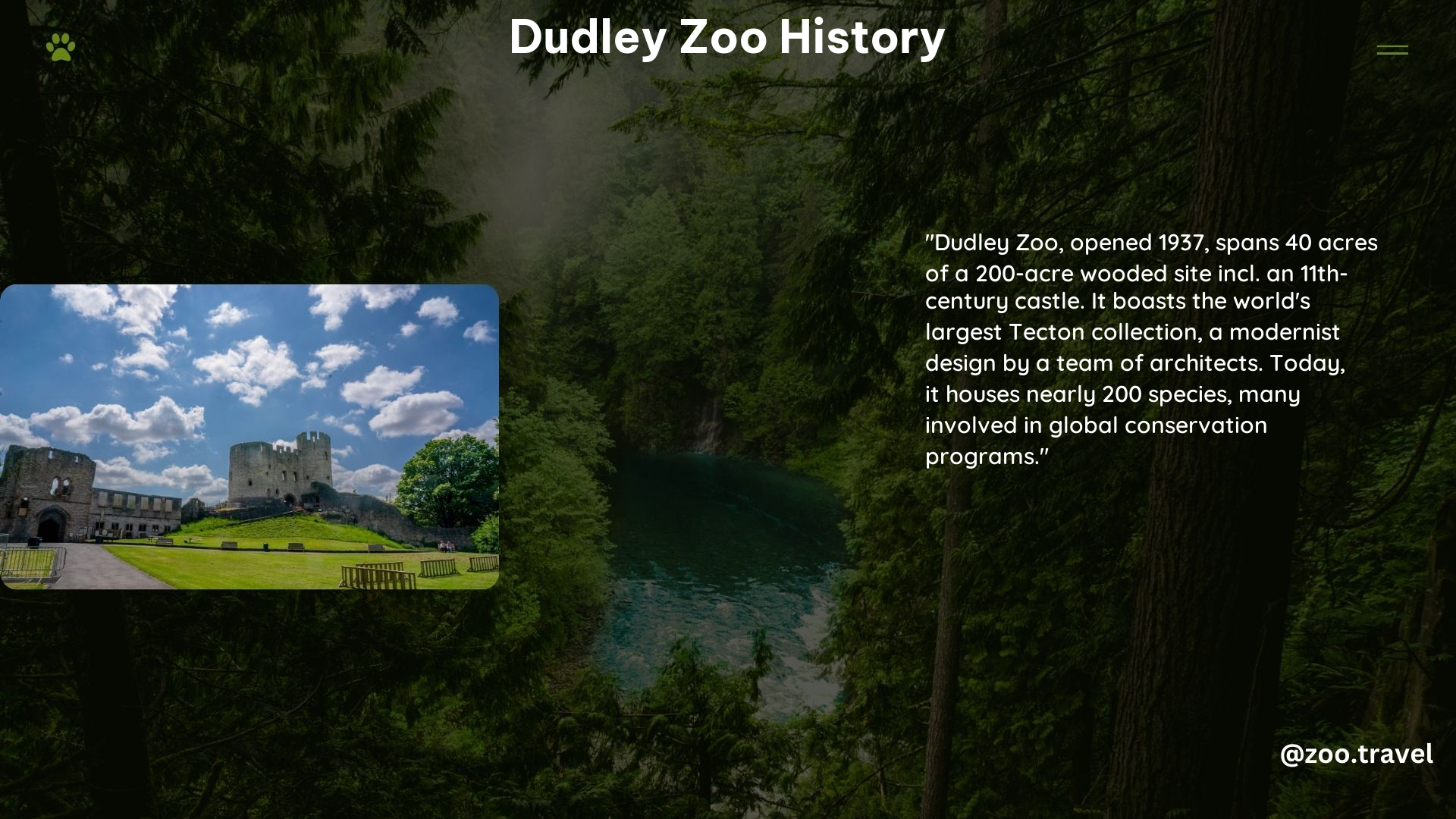Dudley Zoo, nestled within the grounds of Dudley Castle in the West Midlands of England, boasts a rich and fascinating history that has captivated visitors for over eight decades. From its humble beginnings in the 1930s to its current status as a renowned zoological attraction, the story of Dudley Zoo is one of resilience, innovation, and a deep commitment to animal welfare and conservation.
The Birth of Dudley Zoo
In the 1930s, the Third Earl of Dudley, the owner of Dudley Castle, had a vision to create a zoo within the castle’s grounds. Joined by Ernest Marsh and Captain Frank Cooper, the initial Board of the Dudley Zoological Society was formed, and the zoo’s collection of animals was sourced primarily from Oxford Zoo.
The zoo’s design was a collaborative effort, led by the renowned architect Berthold Lubetkin and the Tecton group. The steep terrain and the presence of caverns from limestone mining presented unique challenges, but the architects rose to the occasion, choosing a deliberately modern style for the animal enclosures, entrance, and visitor facilities.
Architectural Marvels: The Tecton Buildings

One of the most distinctive features of Dudley Zoo is its collection of Tecton buildings, which have been recognized as architectural masterpieces. These modernist structures, designed by Lubetkin and his team, have received World Monument Status and have become a source of pride for the zoo and the local community.
In recent years, the Tecton buildings have undergone extensive restoration efforts, with the help of the Heritage Lottery Fund. Traditional concrete and carbon fiber have been used to stiffen the large cantilevered viewing platforms, ensuring the preservation of these iconic structures for generations to come.
Animal Collection and Conservation Efforts
Dudley Zoo is home to a diverse collection of 940 animals representing 163 species, including tigers, chimpanzees, lemurs, and snow leopards. Over the years, the zoo has played a significant role in animal conservation, with notable achievements such as the successful breeding of snow leopards and the reintroduction of the European bison to the wild.
In 2003, the zoo made the difficult decision to part with their two female African elephants, providing them with more spacious surroundings. This decision was made with the welfare of the animals in mind, reflecting the zoo’s commitment to ensuring the best possible living conditions for the creatures in its care.
Challenges and Resilience
The history of Dudley Zoo has not been without its challenges. In 1977, the zoo went into receivership and was purchased by Dudley Metropolitan Council. However, the zoo’s resilience shone through, and it is now operated by the Dudley and West Midlands Zoological Society, a registered charity founded in 1978.
The zoo’s early days were not without incident either. On the opening day in 1937, over 250,000 people visited, and in the first few weeks, a Malayan Brown Bear escaped and had to be recaptured twice.
Conclusion
Dudley Zoo’s history is a testament to the power of vision, innovation, and a deep commitment to animal welfare and conservation. From its humble beginnings in the 1930s to its current status as a renowned zoological attraction, the zoo has weathered challenges and emerged stronger, thanks to the dedication of its staff, volunteers, and the support of the local community.
As visitors explore the zoo’s grounds, they are not only captivated by the diverse array of animals but also by the rich history that has shaped this remarkable institution. Dudley Zoo’s story is one that continues to unfold, promising new discoveries and experiences for generations to come.
References:
- Dudley Zoo Facts for Kids. Retrieved from https://kids.kiddle.co/Dudley_Zoo
- The Conservation of Tecton Buildings at Dudley Zoo. Retrieved from https://tectons.dudleyzoo.org.uk
- Zoo History – Dudley Zoo and Castle. Retrieved from https://www.dudleyzoo.org.uk/zoo-history/.
